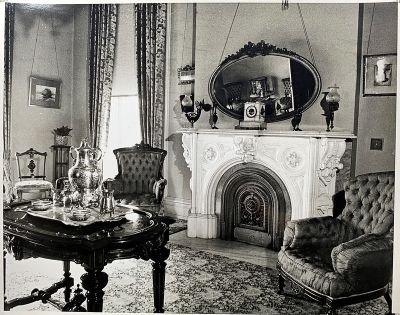
Judge Davis commissioned French-born architect Alfred Piquenard to design the mansion primarily as a residence for his wife, Sarah, who wanted to remain in Bloomington rather than move to Washington, D.C. Piquenard, one of the Midwest's leading architects of the time, could boast of several important commissions, including the state capitol buildings in Des Moines, IA and Springfield, IL.
The David Davis Mansion, also known as Clover Lawn, stands as an impressive reminder of the important role that Illinois played in America's history during the nineteenth century. The elegant Victorian home tells the story of the generation of men and women that created an orderly society out of a chaotic frontier world and then led the United States through the Civil War and early years of Reconstruction.
The David Davis Mansion, also known as Clover Lawn, stands as an impressive reminder of the important role that Illinois played in America's history during the nineteenth century.

A wooded, park-like setting originally enhanced the rural atmosphere of Clover Lawn. What remains today are 4.1 acres, containing an 1872 wood house, an 1850s barn and stable, two privies, a foaling shed, a carriage barn, and an ornamental, flower garden. The circular drive around the Mansion remains as it was originally configured.
The mansion and garden remained in the Davis Family for three succeeding generations, providing a focal point for the social, cultural and political life of the community. In 1960, the house was donated to the State of Illinois; today, it is operated as a state historic site by the Illinois Department of natural Resources. The property was entered on the National Register of Historic Places in 1972 and in 1975 was declared a National Historic Landmark.

